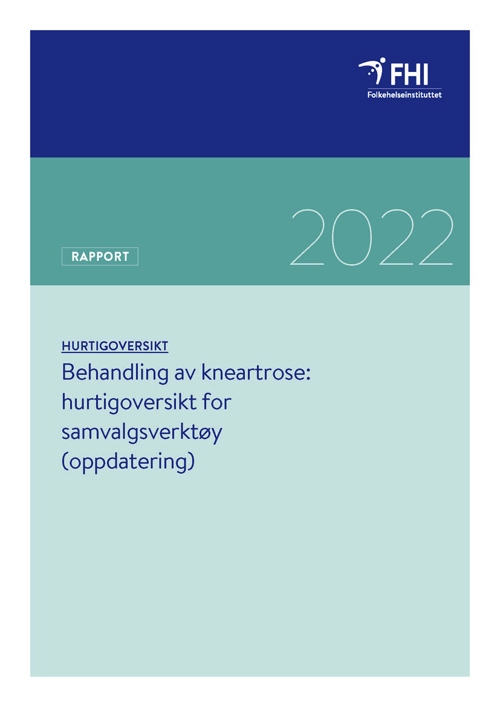Treatment for knee osteoarthritis: a rapid review for patient decision aid (update)
Systematic review
|Published
In this rapid review, the aim was to update the knowledge base for the joint selection tool for the treatment of knee osteoarthritis.
Key message
Osteoarthritis of the knee can make the joints stiff and painful. This can make everyday chores difficult. It is common to divide osteoarthritis into mild, moderate, or severe. Although there is no cure for osteoarthritis, there are treatments that can alleviate the symptoms.
We included ten systematic reviews on the effect of physical exercise, self-management programmes, physical aids, oral drug treatment, injection treatment and surgery for knee osteoarthritis.
For the main outcome pain, we found that:
- Physical exercise provides a moderate reduction in pain compared to no exercise
- Self-management programmes may give a small reduction in pain compared with usual care
- Braces and orthoses probably give little or no difference in pain compared to no aids
- Non-steroidal anti-inflammatory drugs probably give a small reduction, while paracetamol makes little or no difference in pain compared to placebo
- Injections with platelet-rich plasma may provide a small reduction, and steroid injection little or no difference in pain compared to placebo
- Injections with platelet-rich plasma may be more effective in reducing pain compared to injections with hyaluronic acid, whereas the effect compared with steroid injection is uncertain
- Unicompartmental knee arthroplasty may give little or no difference in pain compared to total knee arthroplasty
- Pain was not reported for the comparison between osteotomy and unicompartmental knee arthroplasty
We found no research on the effect of conservative treatment compared to surgical treatment

